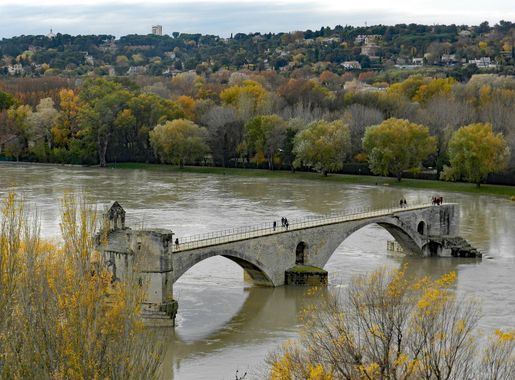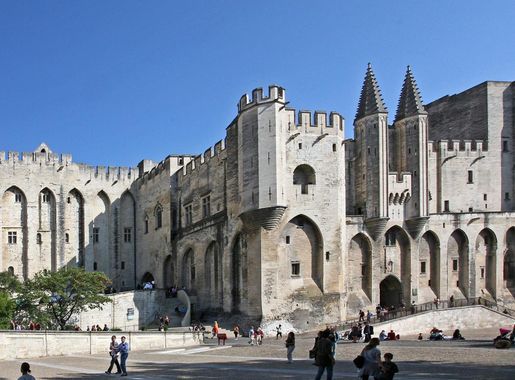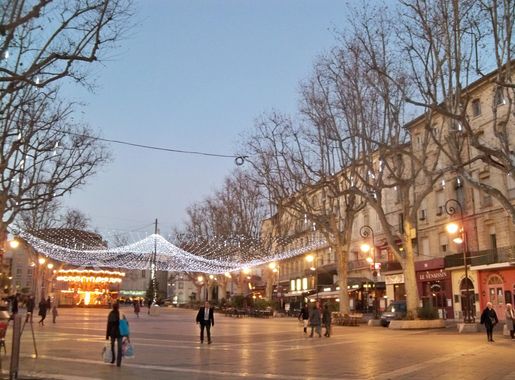
Pont Saint-Bénézet: The Iconic Broken Bridge of Avignon
Discover the timeless allure of Pont Saint-Bénézet in Avignon, a medieval bridge steeped in legend and history, offering stunning views and a glimpse into the past.
Nestled within the charming city of Avignon, Pont Saint-Bénézet, also known as the Bridge of Avignon, stands as a timeless symbol of the region's rich history and cultural heritage. This medieval bridge, built in the 12th century, once spanned the mighty Rhône River, connecting Avignon to Villeneuve-lès-Avignon. Today, only four of the original twenty-two arches remain, creating a picturesque and evocative scene that captures the imagination of visitors from around the world. As you explore the Pont Saint-Bénézet, you'll be transported back in time, walking in the footsteps of pilgrims, traders, and soldiers who once traversed this vital crossing. The bridge is steeped in legend, with stories of its miraculous construction by a young shepherd named Bénézet, who was divinely inspired to build it. The adjoining chapel, dedicated to Saint Nicholas, adds to the bridge's mystical allure and offers a serene spot for reflection. The surrounding area is equally enchanting, with stunning views of the Rhône River and the historic cityscape of Avignon. Take a leisurely stroll along the riverbanks, where you'll find charming cafés and picturesque picnic spots perfect for soaking in the tranquil ambiance. The bridge's unique and somewhat melancholic charm makes it a must-visit destination for history enthusiasts, photographers, and romantics alike.
Local tips in Pont Saint-Bénézet
- Visit early in the morning or late in the afternoon to avoid crowds and capture the best light for photography.
- Don't miss the small museum located at the bridge, which provides fascinating insights into its history and construction.
- Pair your visit with a trip to the nearby Palais des Papes, another iconic landmark in Avignon.
- Wear comfortable shoes, as the cobblestone paths can be uneven and require careful footing.
- Consider taking a guided tour to fully appreciate the historical significance and legends associated with the bridge.
Pont Saint-Bénézet: The Iconic Broken Bridge of Avignon
Nestled within the charming city of Avignon, Pont Saint-Bénézet, also known as the Bridge of Avignon, stands as a timeless symbol of the region's rich history and cultural heritage. This medieval bridge, built in the 12th century, once spanned the mighty Rhône River, connecting Avignon to Villeneuve-lès-Avignon. Today, only four of the original twenty-two arches remain, creating a picturesque and evocative scene that captures the imagination of visitors from around the world. As you explore the Pont Saint-Bénézet, you'll be transported back in time, walking in the footsteps of pilgrims, traders, and soldiers who once traversed this vital crossing. The bridge is steeped in legend, with stories of its miraculous construction by a young shepherd named Bénézet, who was divinely inspired to build it. The adjoining chapel, dedicated to Saint Nicholas, adds to the bridge's mystical allure and offers a serene spot for reflection. The surrounding area is equally enchanting, with stunning views of the Rhône River and the historic cityscape of Avignon. Take a leisurely stroll along the riverbanks, where you'll find charming cafés and picturesque picnic spots perfect for soaking in the tranquil ambiance. The bridge's unique and somewhat melancholic charm makes it a must-visit destination for history enthusiasts, photographers, and romantics alike.
Iconic landmarks you can’t miss
Palais des Papes
Discover the grandeur of the Palais des Papes in Avignon, a historical landmark that showcases Gothic architecture and papal history in stunning detail.

Pont Saint-Benezet (Le Pont d'Avignon)
Explore the historic Pont Saint-Benezet, a UNESCO World Heritage Site in Avignon, offering breathtaking views and rich medieval history along the Rhône River.
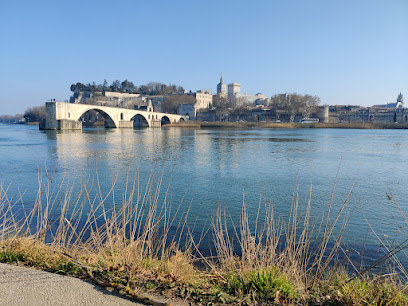
Jardin des Doms
Explore the tranquil Jardin des Doms in Avignon, a serene park offering stunning views, vibrant gardens, and a slice of history in the heart of Provence.
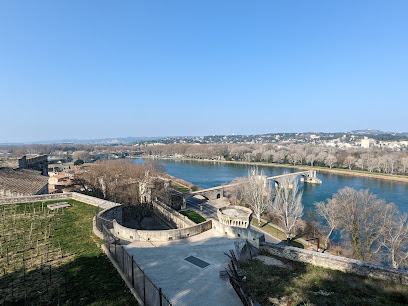
Fort Saint-André
Discover the historical splendor and breathtaking views of Fort Saint André, a captivating fortress in Villeneuve-lès-Avignon, France.
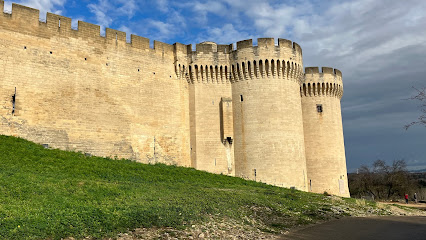
Remparts d'Avignon
Discover the historic Ramparts of Avignon, a UNESCO World Heritage site, where medieval architecture meets breathtaking views of the French landscape.

Tour Saint Jean
Discover the rich history and stunning views at Tour Saint Jean in Avignon, a remarkable landmark that showcases the city's medieval heritage.
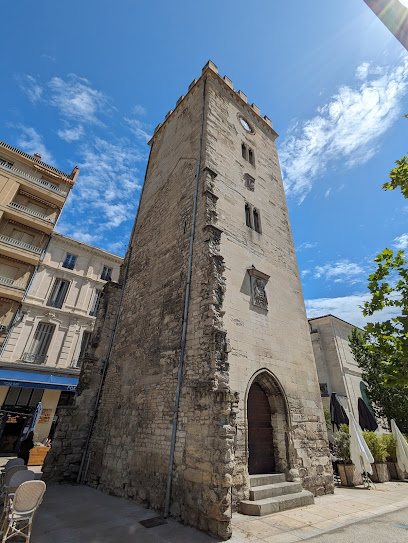
Point de Vue direction Pont d'Avignon
Experience the breathtaking views of Avignon from the Point de Vue direction Pont d'Avignon, a must-visit observation deck for stunning photographs.

MONUMENT DU COMTAT
Explore the Monument du Comtat, a historic landmark in Avignon, showcasing the rich cultural heritage and stunning architecture of the region.
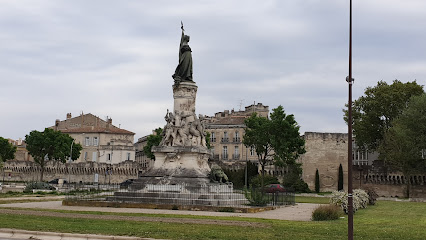
Pont Saint-Bénézet
Experience the medieval grandeur of Pont Saint-Bénézet in Avignon, a UNESCO World Heritage site offering stunning views and rich history.

Place des Corps-Saints
Explore the historical allure of Place des Corps-Saints in Avignon, where charming architecture and vibrant local culture come together in a stunning setting.
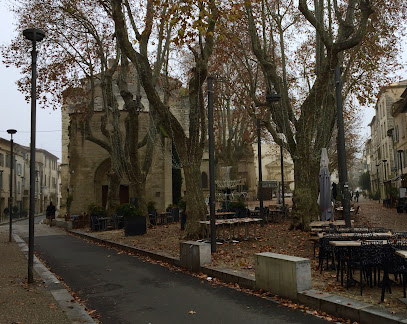
Unmissable attractions to see
Pont Saint-Bénezet (Le Pont d'Avignon)
Discover the beauty and history of Pont Saint-Bénézet, an iconic bridge in Avignon that tells tales of love, legend, and the enchanting Rhône River.
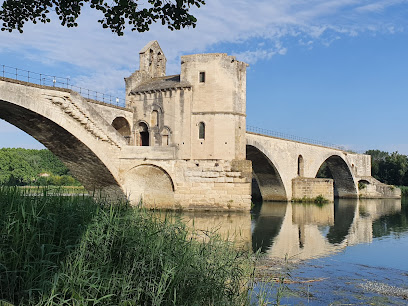
Musée Lapidaire
Explore the depths of ancient history at Musée Lapidaire in Avignon, featuring remarkable Egyptian, Greek, and Roman artifacts in a serene setting.
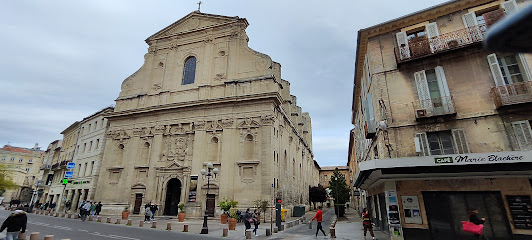
Restos del Claustro de Saint-Martial
Explore the historic beauty of Restos del Claustro de Saint-Martial, a serene tourist attraction in Avignon that echoes the city's rich cultural heritage.
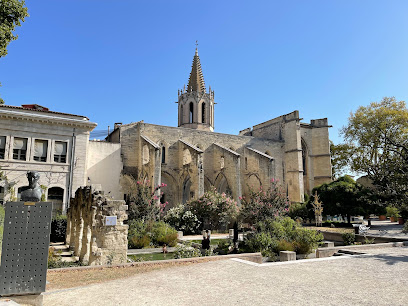
Essential places to dine
Restaurant Le Bercail
Experience authentic French cuisine at Restaurant Le Bercail in Avignon, where local flavors meet exquisite dining in a charming atmosphere.
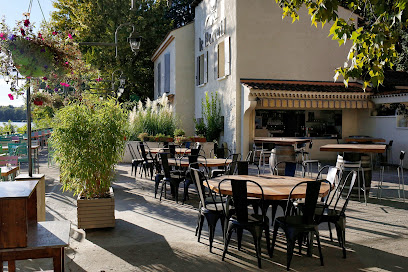
Le Vintage
Discover authentic French cuisine at Le Vintage in Avignon - where tradition meets contemporary flavors in an inviting atmosphere.
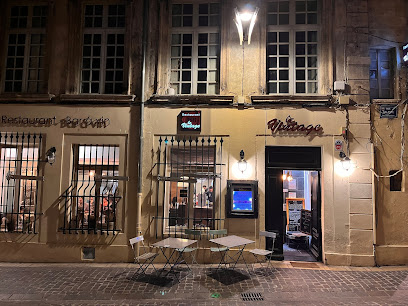
La Cour d'Honneur - Restaurant Avignon Centre Ville
Experience the essence of French cuisine at La Cour d'Honneur in Avignon's historic center—where every meal is a celebration of flavors.
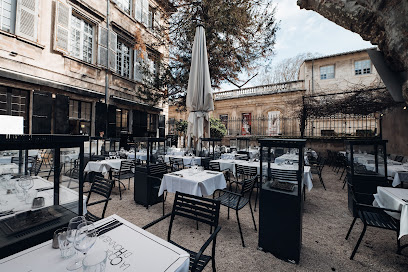
L'Épicerie de Ginette
Experience authentic French cuisine at L'Épicerie de Ginette in Avignon – where tradition meets taste.
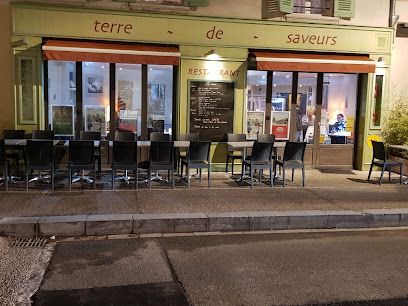
Le Carré du Palais
Discover exquisite French cuisine and exceptional wines at Le Carré du Palais in Avignon - a true culinary gem in the heart of Provence.
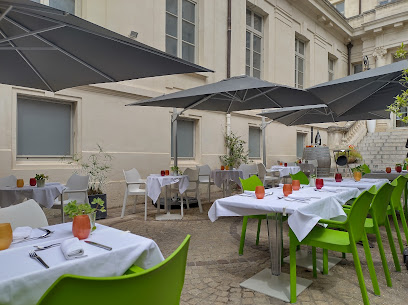
Restaurant L'Épicerie
Discover authentic French and Provençal cuisine at Restaurant L'Épicerie in Avignon's vibrant heart, where every meal is a delightful experience.
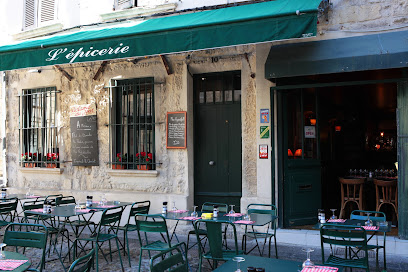
Restaurant Bar à Vin Le 46
Experience authentic Mediterranean flavors at Restaurant Bar à Vin Le 46 in Avignon – where exquisite cuisine meets fine wine.
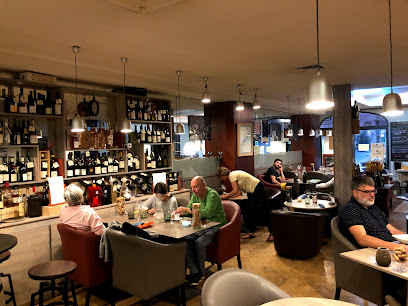
Restaurant SEVIN
Experience the culinary delights of Provence at Restaurant SEVIN in Avignon - where exquisite flavors meet elegant dining.
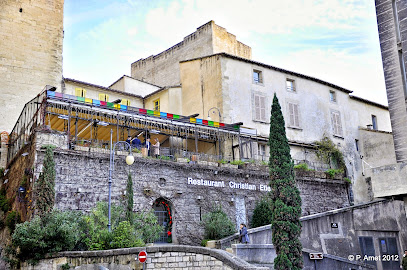
Léo Léa - Assiette au Boeuf - Avignon
Experience exquisite French cuisine at Léo Léa - Assiette au Boeuf; indulge in savory meats and cocktails in Avignon's vibrant heart.

Le Restaurant - La Mirande
Experience exquisite Provençal cuisine in an elegant setting at Le Restaurant - La Mirande in Avignon.
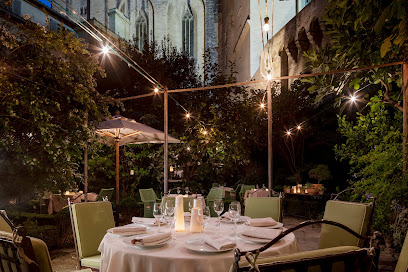
Markets, malls and hidden boutiques
Pont Saint-Bénezet (Le Pont d'Avignon)
Experience the charm of history at Pont Saint-Bénezet, the iconic bridge of Avignon, with stunning views and a rich cultural heritage.
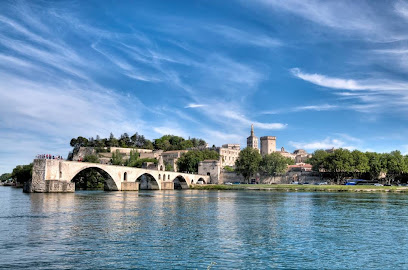
Gallery & Boutique John Gormsen
Discover the artistic heart of Avignon at Gallery & Boutique John Gormsen, where unique art and gifts await every visitor.
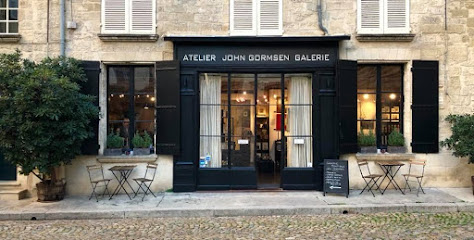
ANDEBANNO
Explore Andebanno Gift Shop in Avignon for unique gifts and souvenirs that embody the charm of French culture and artistry.

Atelier du Palais
Explore Atelier du Palais in Avignon for unique artisanal gifts and handcrafted treasures that celebrate local artistry.
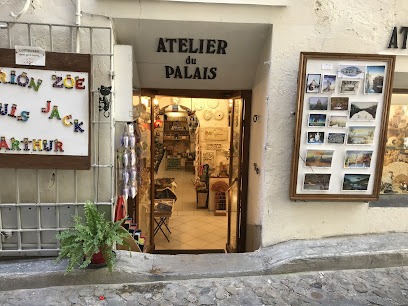
Essential bars & hidden hideouts
The Pipeline
Discover The Pipeline, Avignon's ultimate craft beer destination, where exceptional brews and a vibrant atmosphere await every visitor.

Café Saint-Jean
Experience the essence of French cuisine at Café Saint-Jean, Avignon's charming bistronomic restaurant and wine bar.
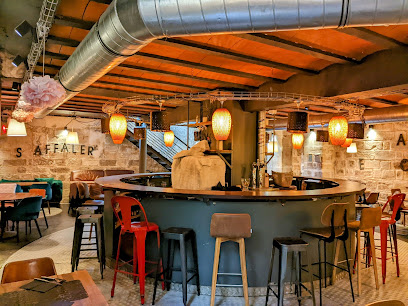
The Red Sky
The Red Sky in Avignon: A vibrant bar offering exquisite cocktails, delicious snacks, and a lively atmosphere perfect for relaxation and socializing.
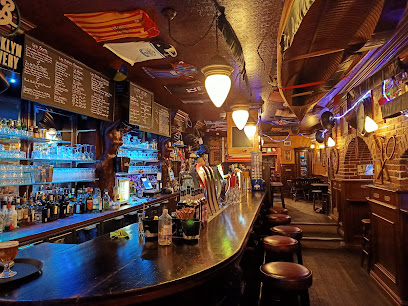
Beer O'Clock
Discover the vibrant beer and wine culture at Beer O'Clock, Avignon's premier destination for craft brews and fine wines.
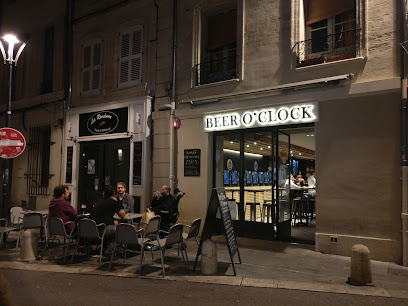
La Cave Des Pas Sages
Experience the charm of Avignon at La Cave Des Pas Sages, where delightful wines, local flavors, and a cozy ambiance await you.
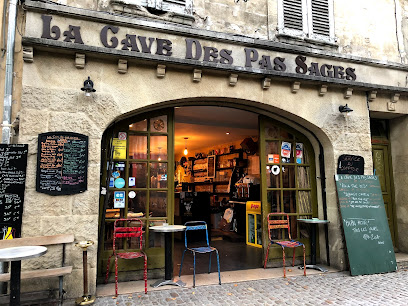
Barberousse Avignon
Experience the vibrant nightlife at Barberousse Avignon, a charming bar offering a wide selection of drinks and a lively atmosphere in the heart of the city.

Pub Z
Experience the vibrant nightlife of Avignon at Pub Z, a charming bar offering diverse drinks and a cozy atmosphere for all.

Le Tom Tip
Discover the charm of Le Tom Tip, a cozy bar in Avignon offering a delightful selection of drinks and a warm, inviting atmosphere.
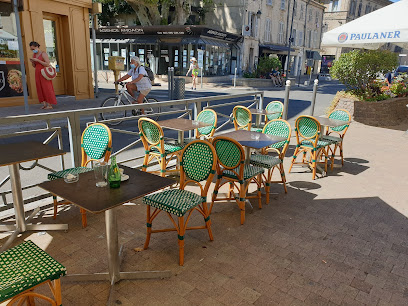
LES BULLEUSES AVIGNON
Discover the flavors of Avignon at Les Bulleuses, a vibrant beer hall and creperie offering delightful dishes and a lively atmosphere.
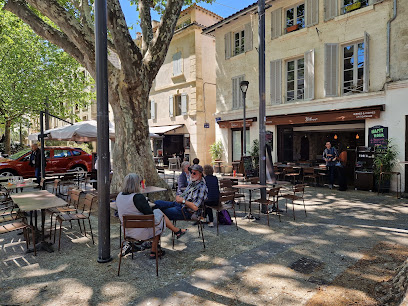
Les Célestins
Discover Les Célestins in Avignon, where exquisite cocktails and cozy ambiance create the perfect escape for tourists seeking relaxation.
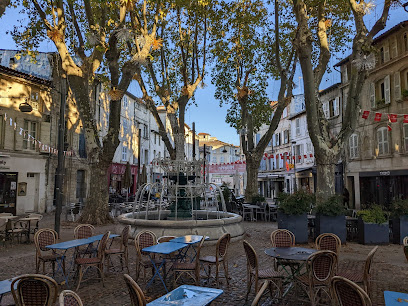
Local Phrases
-
- HelloBonjour
[Bon-zhoor] - GoodbyeAu revoir
[O re-vwar] - YesOui
[Wee] - NoNon
[Non] - Please/You're welcomeS'il vous plaît
[Seel voo pleh] - Thank youMerci
[Mehr-see] - Excuse me/SorryExcusez-moi
[Ex-koo-zay mwa] - How are you?Comment ça va?
[Koh-mohn sah vah] - Fine. And you?Bien. Et vous?
[Byen. Ay voo] - Do you speak English?Parlez-vous anglais?
[Par-lay voo ahn-glay] - I don't understandJe ne comprends pas
[Zhuh nuh kohm-prahnd pah]
- HelloBonjour
-
- I'd like to see the menu, pleaseJe voudrais voir la carte, s'il vous plaît
[Zhuh voo-dray vwahr lah kart, seel voo pleh] - I don't eat meatJe ne mange pas de viande
[Zhuh nuh mahnj pah duh vyand] - Cheers!Santé!
[Sahn-tay] - I would like to pay, pleaseJe voudrais payer, s'il vous plaît
[Zhuh voo-dray pay-ay, seel voo pleh]
- I'd like to see the menu, pleaseJe voudrais voir la carte, s'il vous plaît
-
- Help!Au secours!
[O se-coor] - Go away!Allez-vous en!
[Al-lay voo on] - Call the Police!Appelez la police!
[Ah-pleh lah poh-leece] - Call a doctor!Appelez un médecin!
[Ah-pleh zun may-deh-sahn] - I'm lostJe suis perdu
[Zhuh swee pair-doo] - I'm illJe suis malade
[Zhuh swee mah-lahd]
- Help!Au secours!
-
- I'd like to buy...Je voudrais acheter...
[Zhuh voo-dray ash-tay...] - I'm just lookingJe regarde juste
[Zhuh ruh-gard juhst] - How much is it?Combien ça coûte?
[Kohm-byen sah koot] - That's too expensiveC'est trop cher
[Say troh shehr] - Can you lower the price?Pouvez-vous baisser le prix?
[Poo-vez voo bay-say luh pree]
- I'd like to buy...Je voudrais acheter...
-
- What time is it?Quelle heure est-il?
[Kell er ay teel] - It's one o'clockIl est une heure
[Eel ay oon er] - Half past (10)Dix heures et demi
[Dees er ay dem-ee] - MorningMatin
[Mah-tan] - AfternoonAprès-midi
[Ah-preh mee-dee] - EveningSoir
[Swahr] - YesterdayHier
[Yehr] - TodayAujourd'hui
[Oh-zhoor dewee] - TomorrowDemain
[Duh-man] - 1Un
[Un] - 2Deux
[Deuh] - 3Trois
[Twah] - 4Quatre
[Kah-truh] - 5Cinq
[Sank] - 6Six
[Sees] - 7Sept
[Set] - 8Huit
[Weet] - 9Neuf
[Nuhf] - 10Dix
[Dees]
- What time is it?Quelle heure est-il?
-
- Where's a/the...?Où est...?
[Oo ay] - What's the address?Quelle est l'adresse?
[Kell ay lah-dress] - Can you show me (on the map)?Pouvez-vous me montrer (sur la carte)?
[Poo-vez voo muh mohn-tray (sir lah kart)] - When's the next (bus)?Quand est le prochain (bus)?
[Kahnd ay luh proh-shen (bus)] - A ticket (to ....)Un billet (pour ...)
[Un b-yay (poor)]
- Where's a/the...?Où est...?
History of Pont Saint-Bénézet
-
The Pont Saint-Bénézet, also known as the Pont d'Avignon, was constructed in the late 12th century, specifically between 1177 and 1185. It was commissioned by a shepherd named Bénézet who claimed divine inspiration to build a bridge across the Rhône. This remarkable feat of engineering was crucial in facilitating trade and travel between the Kingdom of France and the Papal States, enhancing Avignon's significance as a commercial hub.
-
The bridge gained religious importance, as it connected the pilgrimage routes to Santiago de Compostela. Pilgrims and travelers would cross the bridge, making it a vital link for those on spiritual journeys. The bridge's construction was seen as a testament to the faith and determination of the local community, with the Chapel of Saint Nicholas built on the bridge to serve as a place of worship.
-
Throughout the centuries, the Pont Saint-Bénézet faced numerous challenges, including flooding and erosion. Significant sections of the bridge were destroyed during floods in the 17th century, leading to various restoration projects. By the 18th century, only four arches remained from the original structure, symbolizing both the resilience and vulnerability of historic constructions in the region.
-
The Pont Saint-Bénézet has inspired countless artists and musicians, most notably the popular children's song 'Sur le Pont d'Avignon' which celebrates the bridge and its cultural significance. This song has propagated the bridge's fame beyond French borders, embedding it into the cultural fabric of France and making it an emblematic symbol of Avignon's rich heritage.
-
In 1995, the Pont Saint-Bénézet was designated a UNESCO World Heritage Site, recognizing its historical and architectural significance. This status has further solidified its importance as a cultural landmark in Avignon, drawing visitors from across the globe to admire its beauty and learn about its storied past.
Pont Saint-Bénézet Essentials
-
Pont Saint-Bénézet is easily accessible from various neighborhoods in Avignon. If you are arriving by train, the Avignon TGV station is approximately 10 minutes away by taxi or local bus. From the city center, you can take bus line 5, which connects the central area to Pont Saint-Bénézet. Walking from the Palais des Papes takes around 15-20 minutes, crossing the iconic Pont d'Avignon along the way.
-
Pont Saint-Bénézet is a small area and can be explored on foot. For longer distances, public buses are available, and bicycles can be rented from local shops. The city is bike-friendly, with dedicated paths. Taxis are also an option, and ridesharing services operate in the area. Consider using the local tram system, which connects with various points of interest across Avignon.
-
Pont Saint-Bénézet is generally safe for tourists, but it's advisable to stay vigilant, particularly in crowded areas. Avoid walking alone late at night in poorly lit streets. While there are no specific high-crime areas targeting tourists, petty theft can occur, especially near popular attractions like the bridge and the Palais des Papes.
-
In case of emergency, dial 112 for police, fire, or medical assistance. The nearest hospital is located in the city center, and there are also pharmacies available for minor health issues. It is recommended to have travel insurance to cover medical emergencies. Always keep a list of local emergency numbers handy.
-
Fashion: Do dress comfortably for walking but avoid overly casual attire when visiting religious sites. Don’t wear beachwear or overly revealing clothing. Religion: Do respect local customs, particularly when visiting churches. Cover your shoulders and knees. Public Transport: Do give your seat to elderly or disabled passengers. Don’t use your phone loudly in public transport. Greetings: Do greet with a polite 'Bonjour' and a smile. Don’t assume familiarity; use formal titles unless invited otherwise. Eating & Drinking: Do try local specialties like ratatouille and wines from the region. Don’t eat while walking in religious areas, as it can be seen as disrespectful.
-
To experience Pont Saint-Bénézet like a local, visit the area early in the morning to enjoy the peaceful ambiance before crowds arrive. Explore the local markets for fresh produce and artisanal goods. Engage with local vendors and don’t hesitate to ask for recommendations on where to eat or what to see. Attend a performance at the nearby Palais des Papes if you can, as it offers a cultural experience that showcases Avignon's rich history.
Nearby Cities to Pont Saint-Bénézet
-
Things To Do in Nîmes
-
Things To Do in Aix-en-Provence
-
Things To Do in Montpellier
-
Things To Do in Marseille
-
Things To Do in Grenoble
-
Things To Do in Saint-Tropez
-
Things To Do in Cannes
-
Things To Do in Nice
-
Things To Do in Lyon
-
Things To Do in Les Moneghetti
-
Things To Do in Moneghetti
-
Things To Do in Fontvieille
-
Things To Do in La Condamine
-
Things To Do in Monaco-Ville
-
Things To Do in Monte Carlo

